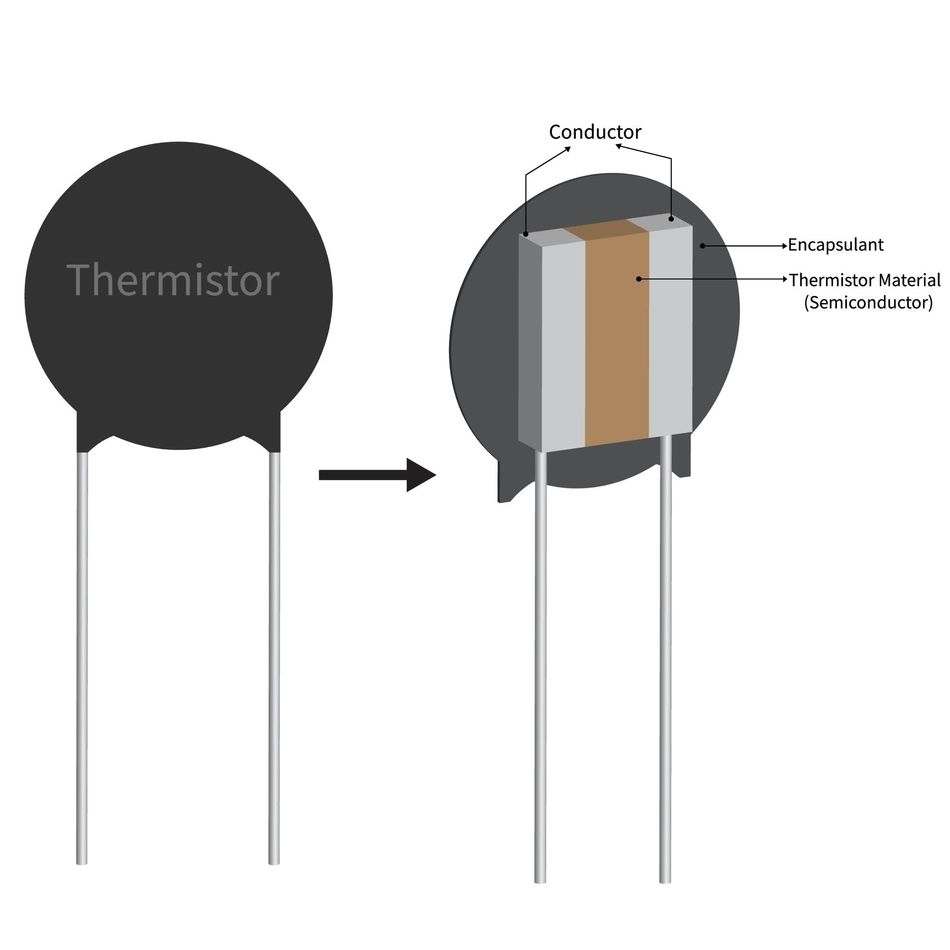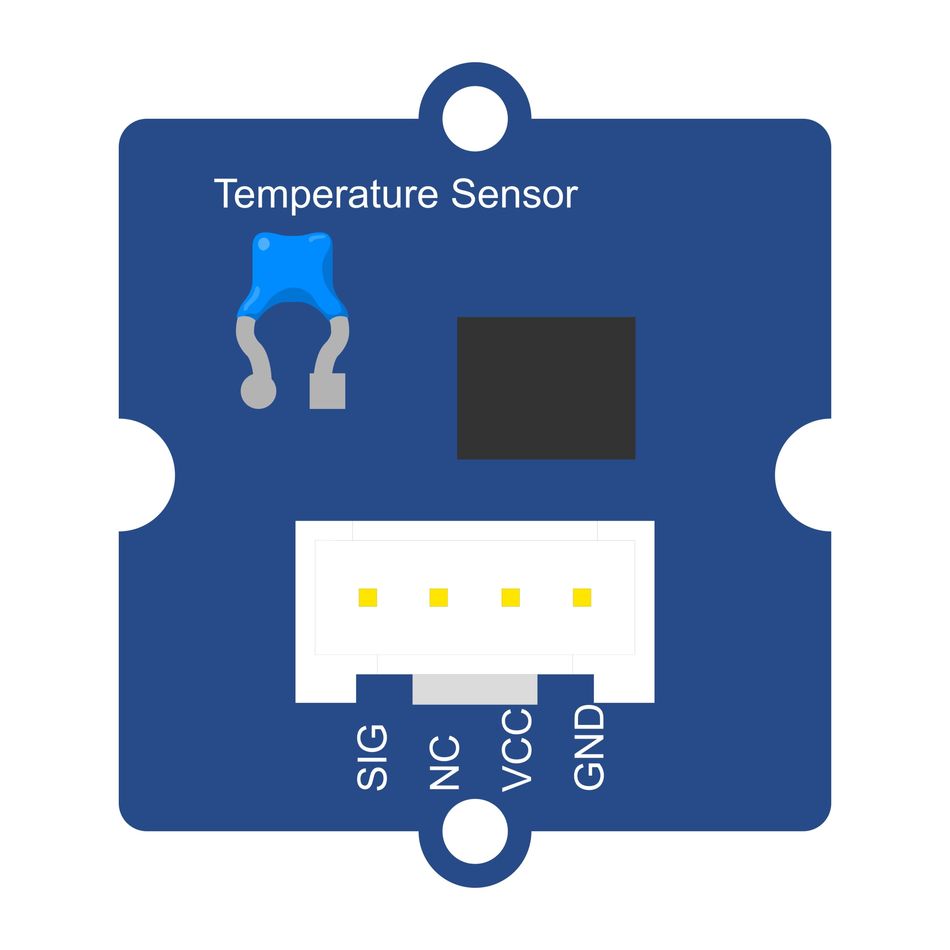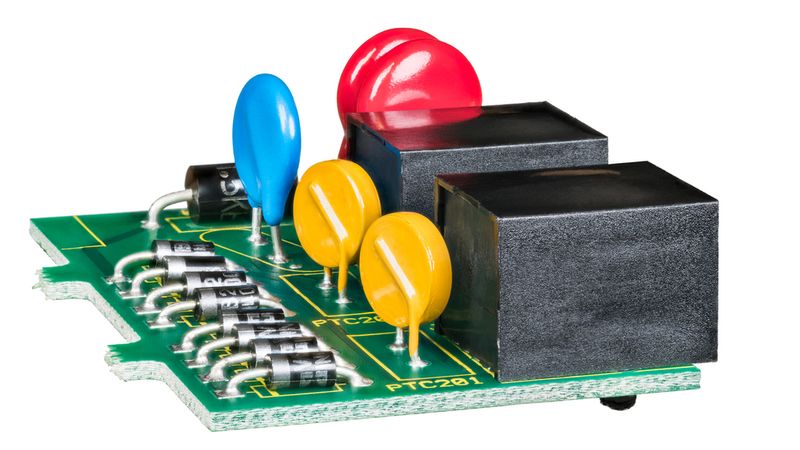What Is An NTC Thermistor: Unveiling the Temperature-Sensitive Powerhouse
The unsung hero of temperature sensing in modern electronics. NTC thermistors are revolutionizing precision measurement across industries. Discover how these tiny components are making a big impact in engineering and technology.
Introduction
NTC (Negative Temperature Coefficient) thermistors are resistors that decrease in resistance as temperature increases, thanks to their semiconductor ceramic composition. These compact components are essential in temperature sensing for various industries due to their high sensitivity, rapid response, and stability. NTC thermistors are used in temperature control, monitoring, and compensation systems in consumer electronics, industrial processes, and automotive systems, providing engineers with a reliable and cost-effective solution for precise temperature measurement and management.
The Core of NTC Thermistors: Negative Temperature Coefficient Magic
Decoding the NTC Acronym
NTC (Negative Temperature Coefficient) thermistors decrease in electrical resistance as temperature rises, essential for accurate temperature measurement based on resistance changes. The temperature coefficient of resistance (TCR) quantifies this inverse relationship by indicating the relative resistance change per degree of temperature in NTC thermistors.
To visualize this concept, imagine a narrow mountain path that becomes wider as you ascend. Similarly, in an NTC thermistor, the path for electrical current (resistance) becomes easier (decreases) as the temperature rises. Mathematically, the TCR for an NTC thermistor is expressed as:
TCR = -(1/R) * (dR/dT)
Where R is the resistance, and T is the temperature. The negative sign indicates the inverse relationship between resistance and temperature, which is the hallmark of NTC thermistors.
Material Composition: The Science Behind the Sensors
NTC thermistors are ceramic semiconductors made from metal oxides like manganese, nickel, cobalt, iron, and copper. These materials exhibit a negative temperature coefficient effect, meaning their resistance decreases as temperature increases. The specific oxide composition determines the thermistor's resistance range, sensitivity, and operating temperature.
Recommended Reading: How to Select the Best Temperature Sensors for Your Project
At the atomic level, increased temperature allows more electrons to move from the valence band to the conduction band, reducing resistance. Doping with impurities such as lithium, silicon, or germanium fine-tunes these properties, enhancing the resistance-temperature characteristics and response curve linearity.
Manufacturing involves sintering, where mixed raw materials are shaped and heated above 1000°C to form a ceramic structure. Advanced techniques like thick-film and thin-film deposition create thermistors with precise characteristics, suitable for integration into complex electronics.
NTC Thermistor Characteristics: Understanding the Curves
Resistance-Temperature Relationship: The Heart of NTC Operation
The core characteristic of NTC thermistors is the non-linear relationship between resistance and temperature. As temperature increases, the resistance decreases exponentially, following a curve that is steeper at lower temperatures and flattens out at higher temperatures.
The B-parameter, also known as the beta value, is a crucial factor in characterizing NTC thermistors. It represents the sensitivity of the thermistor and is derived from the slope of the resistance-temperature curve. The B-parameter equation is:
R = R₀ e^(B (1/T - 1/T₀))
Where R is the resistance at temperature T (in Kelvin), R₀ is the resistance at reference temperature T₀, and B is the beta value. While this equation is simple and widely used, it has limitations in accuracy, especially over wide temperature ranges.
For more precise modeling, the Steinhart-Hart equation is preferred:
1/T = A + B ln(R) + C (ln(R))³
Where T is temperature in Kelvin, R is resistance in ohms, and A, B, and C are the Steinhart-Hart coefficients specific to the thermistor.
To calculate resistance at different temperatures:
Using the B-parameter equation: R = R₀ e^(B (1/T - 1/T₀))
Using the Steinhart-Hart equation (solving for R): ln(R) = ((-b ± √(b² - 4ac)) / 2a) Where a = C, b = B, and c = A - 1/T
The sensitivity of an NTC thermistor, defined as the change in resistance per degree of temperature change, is highest at lower temperatures and decreases as temperature increases, making this non-linear sensitivity a crucial factor in thermistor selection and circuit design.
Sensitivity and Accuracy: Precision in Temperature Measurement
NTC thermistors exhibit exceptional sensitivity, especially at lower temperatures, with up to 10 times the sensitivity of thermocouples and 5 times that of Platinum RTDs. For example, an NTC thermistor might have a sensitivity of -4% resistance change per °C at 25°C, compared to 0.4% for a Pt100 RTD.
Several factors affect NTC thermistor accuracy:
Tolerance: Manufacturing variations lead to resistance tolerances of ±1% to ±20% at room temperature.
Interchangeability: Differences between thermistors of the same model affect measurement consistency.
Hysteresis: Temperature cycling causes slight resistance value differences, typically less than 0.2°C.
Long-term stability: Aging causes resistance drift, usually less than 0.2°C per year.
Self-heating: Current flow generates heat, skewing measurements.
Self-heating is critical in NTC thermistor applications. The self-heating power (P) is P = I²R, where I is the current and R is resistance. The temperature rise (ΔT) due to self-heating is ΔT = P * D, where D is the dissipation constant (typically 1-10 mW/°C in still air).
Comparison of temperature sensing technologies:
Feature | NTC Thermistor | Thermocouple | Platinum RTD |
Sensitivity | High (typ. -4%/°C) | Low (typ. 40µV/°C) | Medium (typ. 0.4%/°C) |
Accuracy | ±0.1°C to ±1°C | ±0.5°C to ±2°C | ±0.1°C to ±0.5°C |
Response Time | Fast (0.12-10s) | Very Fast (0.01-0.1s) | Medium (1-10s) |
Temperature Range | -100°C to 300°C | -270°C to 1800°C | -200°C to 850°C |
Linearity | Non-linear | Fairly linear | Very linear |
Cost | Low | Low | High |
NTC thermistors offer a balance of high sensitivity, good accuracy, and fast response time, making them ideal for many precision temperature measurement applications, especially in the -50°C to 150°C range.
Applications Across Industries: NTC Thermistors in Action
Consumer Electronics: Keeping Devices Cool and Efficient
NTC thermistors are essential for temperature management and protection in consumer electronics like smartphones and laptops. They are typically used in voltage divider circuits, where the thermistor forms one arm of the divider. The output voltage, varying with temperature, is fed into an analog-to-digital converter (ADC) for the device's microcontroller to process.

In a smartphone, multiple NTC thermistors may be placed near critical points such as the battery, processor, and charging IC. A common circuit might use a 10kΩ NTC thermistor in series with a 10kΩ fixed resistor and a reference voltage of 3.3V. The microcontroller calculates the temperature based on the midpoint voltage of the divider.
In battery temperature monitoring, NTC thermistors are integral to the battery management system (BMS). They are often embedded within the battery pack and connected to the BMS IC. The BMS uses the temperature data to:
Adjust charging current and voltage to optimize battery life and charging speed
Prevent charging or discharging when the battery temperature is outside safe limits
Trigger thermal cutoff in case of overheating.
In battery management systems (BMS), thermistors in voltage divider configurations connect to an ADC input of the BMS IC, which uses temperature readings to manage the battery. In power supply units, NTC thermistors provide overtemperature protection by being placed near heat-generating components. Connected to comparator circuits, they trigger shutdown or current-limiting mechanisms when the temperature rises and resistance decreases past a preset threshold.
Key design considerations for power supply applications include:
Proper thermal coupling between the thermistor and the monitored component
Selection of appropriate threshold voltages for normal operation and fault conditions
Implementing hysteresis to prevent rapid on-off cycling near the temperature threshold
Ensuring fast response time to protect against sudden temperature spikes
These applications demonstrate how NTC thermistors enable precise temperature monitoring and protection in consumer electronics, contributing to device safety, efficiency, and longevity.
Automotive Engineering: Temperature Control on the Move
NTC thermistors are crucial components in automotive temperature monitoring and control systems. In engine temperature monitoring, thermistors are typically placed in the engine coolant system, often in the coolant outlet or thermostat housing. The signal from these sensors is processed by the Engine Control Unit (ECU) using lookup tables or polynomial approximations to convert resistance to temperature.
Recommended Reading: What is Distributed Control System (DCS)
In climate control systems, NTC thermistors are used in multiple locations, including:
Cabin air temperature sensors
Evaporator temperature sensors
Ambient air temperature sensors
Sun load sensors (often paired with photodiodes)
Signal processing for these sensors often involves filtering to reduce noise and improve response time. Many modern systems use adaptive filtering techniques to account for varying conditions.
NTC thermistors contribute to improved fuel efficiency and engine performance through precise temperature monitoring, enabling:
Optimized fuel injection timing based on engine temperature
Efficient operation of the cooling system, activating the fan only when necessary
Accurate control of the catalytic converter temperature for optimal emissions reduction
A typical closed-loop control system using NTC thermistors in automotive applications is the electronic thermostat control. The ECU uses input from coolant temperature sensors to control the thermostat opening, maintaining optimal engine temperature across various operating conditions.
Critical automotive applications for NTC thermistors include:
Engine Coolant Temperature Sensing
Temperature range: -40°C to 150°C
Accuracy: ±1°C
Response time: < 10 seconds
Intake Air Temperature Sensing
Temperature range: -40°C to 120°C
Accuracy: ±0.5°C
Response time: < 5 seconds
Battery Temperature Monitoring (for EVs and hybrids)
Temperature range: -30°C to 80°C
Accuracy: ±0.5°C
Response time: < 20 seconds
Transmission Oil Temperature Sensing
Temperature range: -40°C to 150°C
Accuracy: ±2°C
Response time: < 30 seconds
Cabin Climate Control
Temperature range: -20°C to 80°C
Accuracy: ±0.3°C
Response time: < 10 seconds
Industrial Process Control: Precision in Manufacturing
NTC thermistors are essential in industrial temperature control, often paired with PID controllers for precise regulation in heating and cooling systems. Their high sensitivity ensures product quality and process efficiency. For example, in plastic injection molding, they prevent defects by maintaining consistent material viscosity.
Recomended Reading: A Comprehensive Guide to Implementation and Understanding in Industrial Systems
Specific industries heavily relying on NTC thermistors include:
Semiconductor Manufacturing:
Challenge: Extremely tight temperature control required during wafer processing.
Solution: Use of high-precision NTC thermistors in thermal chucks and chemical baths, often with accuracies better than ±0.1°C.
Chemical Processing:
Challenge: Maintaining precise reaction temperatures in batch processes.
Solution: NTC thermistors embedded in reactor vessels, often using multiple sensors for temperature profiling.
Food and Beverage Production:
Challenge: Ensuring consistent temperatures during pasteurization and fermentation.
Solution: Waterproof NTC thermistors in stainless steel housings for immersion in liquids.
Pharmaceutical Manufacturing:
Challenge: Strict temperature control in drug formulation and storage.
Solution: High-accuracy NTC thermistors in climate-controlled chambers and stability testing equipment.
In hazardous environments, such as oil refineries or chemical plants, NTC thermistors are designed with intrinsic safety in mind. This often involves:
Encapsulation in explosion-proof housings
Use of current-limiting circuits to prevent spark generation
Certification to standards like ATEX or IECEx
Special packaging requirements for harsh industrial environments include:
Hermetic sealing against moisture and corrosive chemicals
Robust lead attachments to withstand vibration
High-temperature insulation materials for use in furnaces or ovens
Radiation-hardened designs for nuclear applications
These industrial applications demonstrate the versatility and critical importance of NTC thermistors in maintaining precise temperature control across a wide range of manufacturing processes.
Challenges and Limitations: Navigating NTC Thermistor Complexities
Non-Linearity: Overcoming the Curve
The non-linear response of NTC thermistors presents significant challenges in temperature measurement and circuit design. As temperature increases, the resistance change per degree becomes smaller, leading to reduced sensitivity at higher temperatures. This non-linearity can result in measurement errors and complicate the design of temperature-dependent control systems.
Several linearization techniques are employed to address this challenge:
Series-parallel resistor networks: This method involves adding fixed resistors in series and parallel with the NTC thermistor to flatten the response curve. A typical configuration is the
Wheatstone bridge:
Vcc
|
R1 -- R2
| |
NTC -- R3
|
GND
The values of R1, R2, and R3 are chosen to optimize linearity over a specific temperature range. While simple, this method offers limited accuracy and range.
Look-up tables and interpolation: This digital approach stores pre-calculated temperature values corresponding to resistance or voltage readings. Linear interpolation is used for values between stored points. This method offers high accuracy but requires significant memory for large tables.
Analog linearization circuits: Op-amp based circuits can be designed to produce a more linear output. For example, a log-antilog amplifier can be used to compensate for the exponential characteristic of the NTC thermistor. These circuits can provide good accuracy but may be sensitive to component tolerances.
Digital linearization using microcontrollers: This method involves using the Steinhart-Hart equation or higher-order polynomials to calculate temperature from resistance. It offers high accuracy over a wide range but requires computational resources.
Comparison of linearization methods:
Method | Accuracy | Complexity | Cost | Range |
Series-parallel | Low | Low | Low | Limited |
Look-up tables | High | Medium | Medium | Wide |
Analog circuits | Medium | High | Medium | Medium |
Digital (MCU) | High | High | High | Wide |
Pseudocode for Steinhart-Hart equation linearization:
function calculateTemperature(resistance):
A, B, C = loadCalibrationCoefficients()
lnR = ln(resistance)
T_inv = A + B*lnR + C*(lnR^3)
temperature = (1 / T_inv) - 273.15 // Convert to Celsius
return temperature
Error analysis in linearization involves considering several sources:
Thermistor tolerance: Typically 1% to 5%, causing baseline errors.
Calibration errors: Inaccuracies in determining equation coefficients.
Quantization errors: In ADC conversion of analog signals.
Computational errors: Rounding and truncation in digital calculations.
To minimize errors:
- Use high-precision thermistors and calibration equipment
- Employ oversampling and averaging in ADC readings
- Use floating-point calculations in digital methods
- Periodically recalibrate systems to account for drift
Quantifying errors often involves statistical analysis of measurements against known reference temperatures across the operating range. The maximum absolute error and root mean square error (RMSE) are common metrics used to evaluate linearization performance.
Self-Heating Effects: Balancing Sensitivity and Power
Self-heating in NTC thermistors occurs when the current flowing through the device generates heat, causing the thermistor's temperature to rise above the ambient temperature it's meant to measure. This effect can lead to significant measurement errors if not properly managed.
The self-heating effect can be modeled mathematically as:
ΔT = P * R_th
Where: ΔT = Temperature rise due to self-heating P = Power dissipated in the thermistor (P = I^2 * R) R_th = Thermal resistance of the thermistor to its surroundings (°C/W)
To minimize self-heating, several methods can be employed:
1. Pulsed measurements: This technique involves applying power to the thermistor only for short durations.
Timing diagram:
Voltage
^
| ____ ____ ____
| | | | | | |
|_| |__| |__| |__> Time
<-T-> <-Δt->
T = Measurement pulse width Δt = Time between measurements
Circuit example:
Vcc
|
R
|
NTC -- Switch
|
ADC
The switch is controlled by a microcontroller to enable pulsed measurements.
2.Low-power designs: Using lower excitation currents reduces self-heating but decreases sensitivity. The trade-off can be managed by:
Choosing thermistors with higher resistance values
Using high-resolution ADCs to detect smaller voltage changes
Implementing noise reduction techniques like oversampling
3.Heat sinking techniques:
Increasing the thermistor's surface area
Using thermally conductive epoxies or pastes
Embedding the thermistor in a metal probe for better thermal coupling
Conclusion
NTC thermistors are essential in modern temperature sensing due to their high sensitivity, fast response, and cost-effectiveness. Their use spans consumer electronics to industrial process control, enabling precise temperature measurement and control. Despite challenges like non-linearity and self-heating, their versatility and performance make them invaluable. As temperature-dependent processes advance, understanding and effectively utilizing NTC thermistors remains crucial.
Frequently Asked Questions
What's the difference between NTC and PTC thermistors?
NTC (Negative Temperature Coefficient) thermistors decrease in resistance as temperature increases, while PTC (Positive Temperature Coefficient) thermistors increase in resistance. NTCs are typically used for temperature measurement, while PTCs are often used in current-limiting and self-regulating heating applications.How do I select the right NTC thermistor for my application?
Consider the following factors:Temperature range: Choose a thermistor with a suitable operating range
Accuracy requirements: Higher accuracy may require tighter tolerance thermistors
Response time: Smaller thermistors generally respond faster
Resistance value: Match to your circuit design, typically 10kΩ or 100kΩ at 25°C
Beta value: Higher beta values offer more sensitivity but more non-linearity
How does lead wire resistance affect measurement accuracy?
Lead wire resistance adds to the thermistor resistance, causing measurement errors. For a 10kΩ thermistor, each 1Ω of wire resistance introduces about 0.01°C error at room temperature. Mitigate this by using:3-wire or 4-wire measurement techniques
Kelvin (4-wire) connections for precise measurements
Compensation algorithms in the measurement system
Can NTC thermistors be used for high-temperature applications?
This is a common misconception. While standard NTC thermistors typically operate up to 150°C, specialized high-temperature NTC thermistors can measure up to 300°C. However, for temperatures above this, thermocouples or RTDs are generally preferred due to their wider range and better stability.How can I extend the measurement range of an NTC thermistor?
To extend the range:Use series-parallel resistor networks to flatten the response curve
Implement advanced linearization techniques like the Steinhart-Hart equation
Consider multiple thermistors with overlapping ranges for wide-range applications
Use signal conditioning circuits to amplify the response in less sensitive regions

